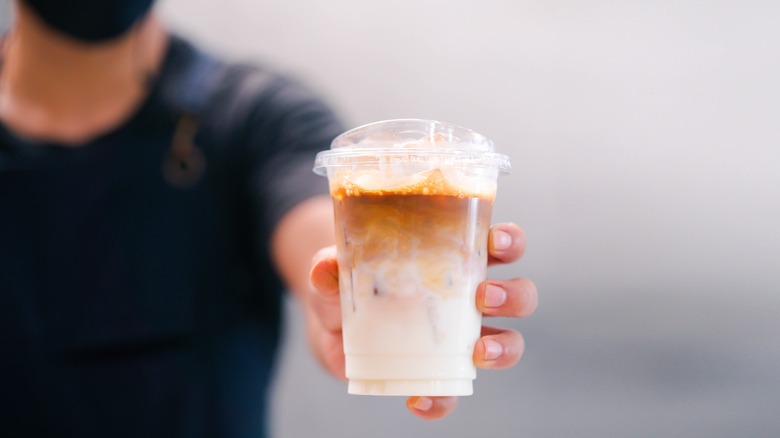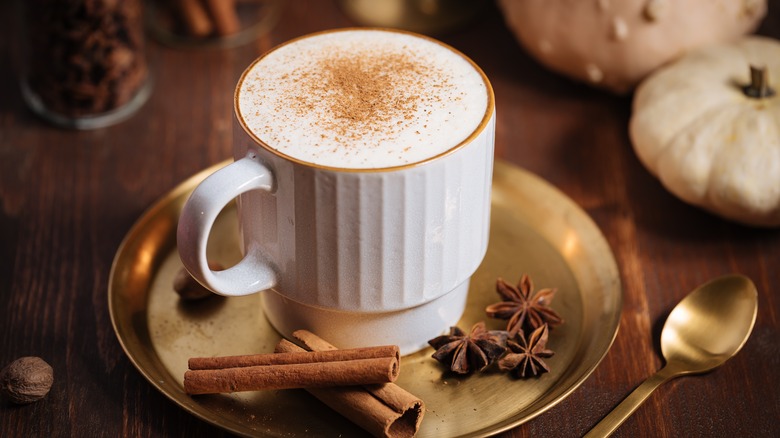Traditional Lattes Look A Bit Different From Modern Variations
Lattes weren't always served how you might be used to seeing them today. Though the ratio of milk, espresso, and textured milk foam are key components of the drink, this beloved coffee beverage has undergone some changes. Milk-based coffees have taken on regional variations throughout Europe, notes Perfect Daily Grind, with the Italian caffè latte, the German Milchkaffee, the French café au lait, and the Spanish café con leche listed on menus at cafes and restaurants.
The latte, derived from the Italian "caffè e latte," which means coffee and milk, explains Roasty Coffee, is served in a variety of presentations by baristas around the world. Whether made with dairy milk or a milk substitute, the foamy layer that rests on the drink's surface is a defining feature, and one or more shots of espresso can be combined with milk to deliver a smooth drink that can be enjoyed any time of day.
While coffee and milk have been served together for centuries, the silky latte gained serious steam in the 1980s in Seattle, notes Nescafe. Americans' use of Italian espresso machines helped contribute to the popularity of the latte, as milk helped smoothen out the taste of espresso, and coffee shops began serving beverages that gave rise to some of the variations we see today, per Perfect Daily Grind.
An evolution in style and taste
Traditionally, lattes were made with baristas steaming a pitcher of milk to make microfoam and poured into glasses first before shots of espresso were added. The drink was served with dry milk foam on top, with the hot beverage resting beneath it, explains Perfect Daily Grind. Yet this presentation has evolved, and we have a coffee shop in Seattle to thank for the change.
David Schomer, the owner of Seattle's Espresso Vivace, described in the December 1994 edition of CoffeeTalk the popular appeal of milky designs at his shop. The shapes made on the tops of coffee orders were aesthetically pleasing and a way to elevate the baristas' work and this unique culinary art form. Schomer has since been credited with the rise of latte art, and cups decorated with hearts, tulips, and rosette patterns have become an industry standard.
To make latte art, textured microfoam is needed. First, baristas add espresso to a cup, then gently pour steamed milk and textured microfoam into the mug to form Instagram-worthy designs. Per Perfect Daily Grind, traditional latte recipes can be enhanced with syrups and spices or served iced. With recipes like this cashew-pepita vegan latte, the possibilities for latte variations have yet to be exhausted.

